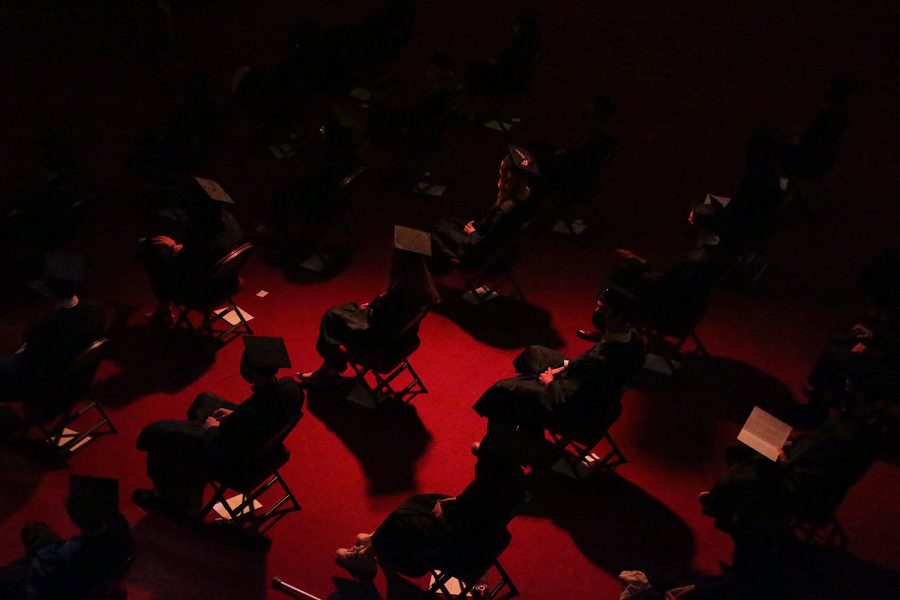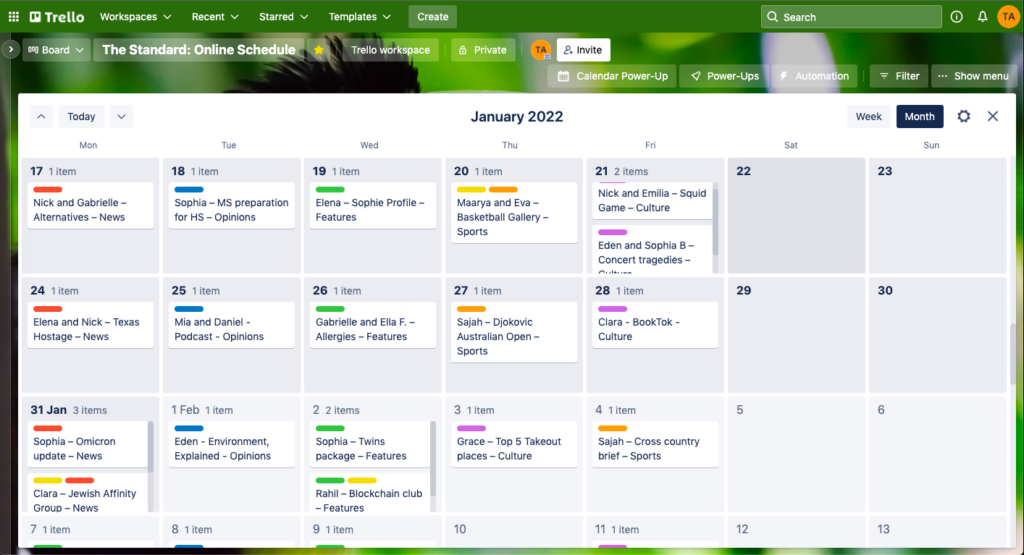Web – Creating package stories
Online, 600 words of copy and a simple photo just don’t cut it anymore. Readers online are searching for content that entertains them and keeps them hooked to a story. On our spreadsheet where we pitch story ideas, we have a column dedicated to describing any multimedia and additional storytelling devices for the story idea. Ideas are not approved until the writer has brainstormed some idea for these boxes.
This story that I organized and put together last year for the Class of 2021’s Commencement Ceremony was entirely alternative storytelling, a collection of pictures and quotes:
Class of 2021 Commencement in quotes, pictures

Confronting toxic masculinity

The digital version of “Confronting toxic masculinity”, which placed first in the NSPA 2021 Multimedia Feature Story of the Year competition, made perfect use of all sorts of elements. The article itself is 3,000 words. Although each of those 3,000 were meticulously selected, myself and my co-writer, Emily Forgash, recognized that the story would be far too boring for the reader to take in just as copy text. So, we created infographics, illustrations, creative pull quote styles and embedded audio soundbites from interviews to really immerse the reader in a way they couldn’t be just from the text alone.
Daily posting

Consistency in posting across sections is key. As lead news editor last year, a piece of some sort would go up in the news section online at least once a week, and there were very often multiple points of coverage a week. Last year, in particular, I learned how to effectively organize and facilitate lots and lots of content. These skills have come in handy now that I assist The Standard’s Deputy Editor-in-Chief: Online in managing everything across five sections. Communication needs to be snappy when pushing out online content at a rate like this. Therefore, the editors have online posting meetings every class period and I will use my free period to visit the staff writers and be a messenger for any necessary communication. We have definitely had points where we struggled with consistency this year, but the team is fully invested and morale is always high when we are on a streak.
Social Media
This year, we have begun using social media – particularly Instagram – differently than in previous years. An event that used to be covered by a written brief we now try to cover with our social media platforms. This switch had a couple of benefits. One, turnarounds are typically quicker. Two, the setup of social media means we connect closer with our student audience as we are meeting them where they are more likely to engage with our content. Features such as likes, comments and shares all help foster a closer relationship between our content and our audience. Below you’ll find a series of Instagram posts that I have produced that follow that switch.
